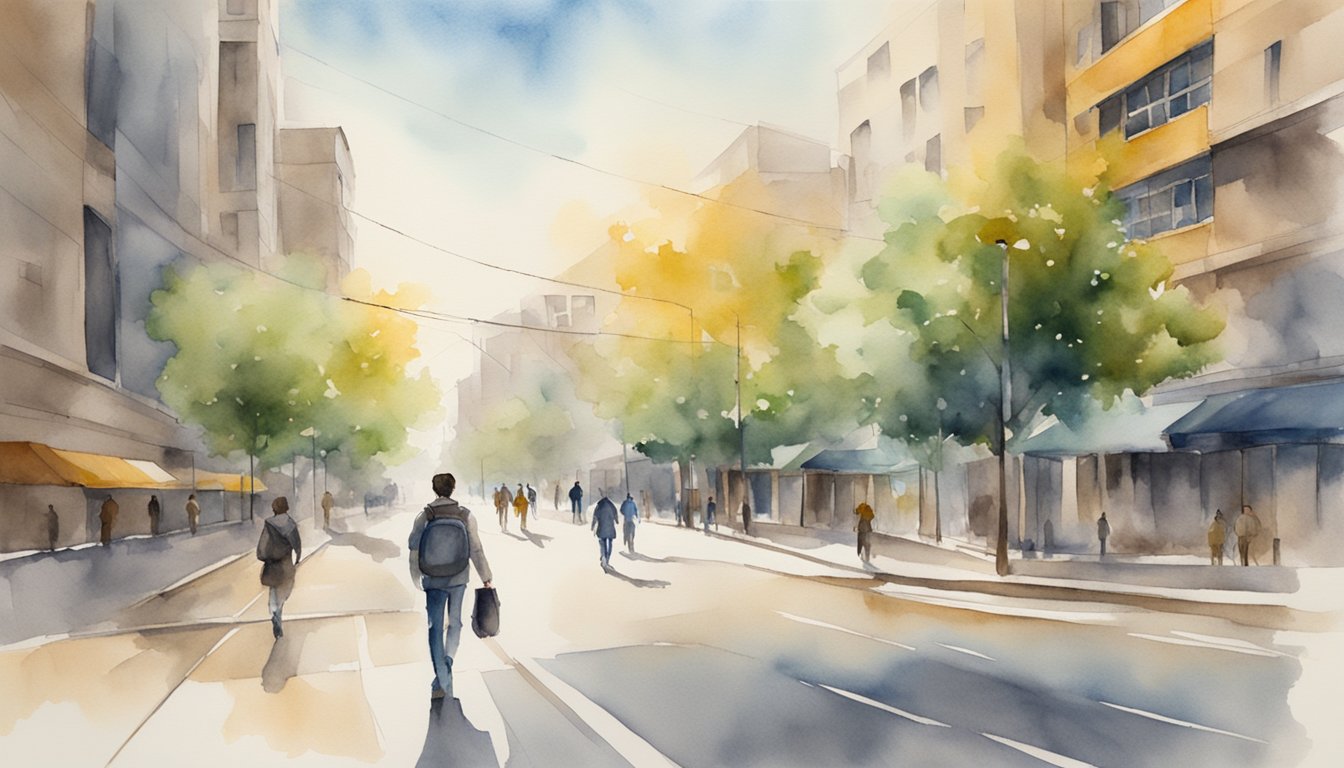Long-distance pedestrianism has a rich history, tracing back to the days when people participated in competitive walking events as a test of endurance and stamina.
These events attracted large crowds and even involved betting, adding an element of excitement and competition.
The early challenges to pedestrianism show that long walks were not just a casual activity but required significant preparation and resilience.
Navigating the key issues in long-distance walking requires proper planning and strategy. Participants often walk for over 20 miles in a single day, making it essential to understand the terrain and pace themselves effectively.
Modern developments have introduced technology and innovations to improve the experience, from better footwear to digital tracking tools.
The health benefits of long-distance walking are vast, promoting cardiovascular fitness and mental well-being.
Safety is also a critical aspect, with innovations focusing on pedestrian safety in both urban and rural settings.
Understanding the intersections of health, safety, and society can significantly enhance the long-distance walking experience.
Key Takeaways
- Pedestrian events have a historical significance with competitive roots.
- Proper planning and technology enhance long-distance walking.
- Walking promotes health benefits and requires safety measures.
Planning and Design

Effective planning and design can greatly alleviate the challenges faced by long-distance pedestrians.
This includes thoughtful infrastructure, sustainability in urban planning, and ensuring safety and accessibility.
Infrastructure and Urban Design
Urban design for long-distance pedestrian routes requires careful planning of infrastructure.
Sidewalks must be wide, continuous, and well-maintained to support prolonged use.
Integration of parks and public space along these routes provides rest areas, enhancing walkability.
Shaded walkways can help during hot weather.
Shelters along the path also give protection from rain.
Ensuring connectivity between different parts of the city is crucial.
Pedestrian paths must be linked to public transport hubs, shops, and services.
This reduces the need for long detours and makes walking more convenient.
Sustainability in Urban Planning
Sustainable urban planning promotes long-distance pedestrianism by reducing dependence on cars.
Compact neighborhoods mean people can access amenities like shops, schools, and parks without traveling far.
This reduces pollution and fosters a healthier lifestyle.
Urban planners should encourage mixed-use developments, combining residential, commercial, and recreational facilities within close proximity.
Using eco-friendly materials in constructing pedestrian paths reinforces sustainability.
Additionally, maintaining green spaces and planting trees along walkways not only provides shade but also contributes to urban biodiversity.
Safety and Accessibility
Safety is paramount for long-distance pedestrians. Pedestrian safety measures should include well-lit paths, pedestrian signals at crossings, and wider sidewalks to accommodate greater numbers of people.
Urban planners must ensure paths are free from obstructions and hazards.
Accessibility is also critical, especially for those with disabilities.
Design features such as ramps, tactile paving for the visually impaired, and appropriate curb heights improve accessibility.
Regular maintenance of walkways prevents issues like cracks and uneven surfaces that can cause accidents.
Equitable access to all parts of the city, regardless of socioeconomic status, promotes a more inclusive urban environment.
Proper urban planning and design enhance the experience and safety of long-distance pedestrians.
These measures ensure that walking remains a viable, enjoyable option for traversing urban areas.
Technology and Innovation

Technology has greatly changed long-distance pedestrianism by improving safety, efficiency, and urban integration.
From pedestrian detection systems to autonomous vehicles, these advancements are shaping the future of pedestrian activities.
Advancements in Pedestrian Detection
Technological advances in pedestrian detection now rely on sophisticated tools like deep learning and computer vision.
These systems use cameras and sensors to identify pedestrians, reducing accidents and enhancing safety.
Surveillance algorithms can now analyze real-time data to predict and prevent collisions.
This is essential as it helps in maintaining smooth, safe foot traffic, especially in smart cities.
Functionality errors remain a challenge, requiring continuous updates to these systems for optimal performance.
Smart Urban Mobility
Smart urban mobility models integrate various transport modes to support pedestrian activities.
Cities like Amsterdam are leading the way by expanding pedestrian infrastructure and introducing mobility hubs.
These hubs combine transport modes with shared options such as electric bikes and scooters.
Connectivity through the Internet of Things (IoT) allows for real-time data sharing.
This data helps manage urban mobility more efficiently, reducing congestions and supporting sustainable urban development.
Impact of Autonomous Vehicles
Autonomous vehicles are poised to transform long-distance pedestrianism.
These vehicles use computer vision and artificial intelligence to interact safely with pedestrians.
Their impact lies in reducing the dependency on traditional vehicles, thus lowering traffic and pollution levels.
Pedestrian detection systems in autonomous vehicles ensure they stop or slow down when a person is detected nearby, enhancing the overall safety standards.
As technology evolves, these systems will become more accurate, fostering safer, pedestrian-friendly cities.
Health, Safety, and Society
Long-distance pedestrianism impacts public health, economic factors, and societal dynamics, especially in light of Covid-19.
Public Health Perspectives
Engaging in long-distance pedestrianism promotes physical activity, which brings many health benefits such as improved cardiovascular health, weight management, and enhanced mental well-being.
Walking long distances helps reduce the risk of chronic diseases like diabetes and heart disease.
Pedestrianism also encourages safer streets and communities since it reduces dependency on motor vehicles, leading to fewer traffic accidents.
Creating safe walkable environments with designated crosswalks and pedestrian paths improves overall public health by providing accessible options for physical activity and reducing injury risks.
Social and Economic Factors
The revival of pedestrianism has economic impacts.
Walkable areas attract more businesses and enhance property values due to increased foot traffic.
Providing safe pedestrian zones can reduce healthcare costs by encouraging healthier lifestyles and decreasing accident rates.
Equitable access to walkable environments ensures all community members benefit, regardless of socioeconomic status.
Policies supporting pedestrian safety and infrastructure investment can bridge social equity gaps, promoting a more inclusive society.
Covid-19 and Public Spaces
The Covid-19 outbreak reshaped public spaces and social interactions.
Social distancing measures increased the demand for safe, open spaces where people could walk and cycle without close contact.
Long-distance pedestrianism became a popular way to maintain physical activity while adhering to health guidelines.
Municipalities had to adapt, creating wider sidewalks and implementing temporary road closures to accommodate the surge in pedestrian traffic.
Investing in walkable public spaces remains crucial for pandemic recovery and future health emergencies.
Links:


